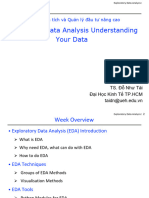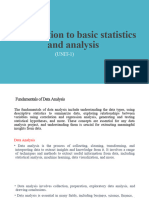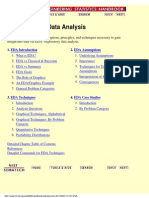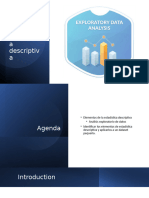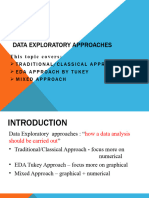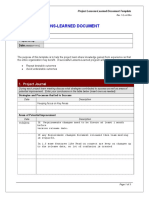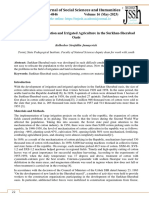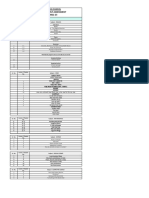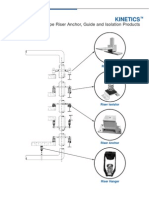0% found this document useful (0 votes)
28 views25 pagesExploratory Data Analysis (EDA) Techniques - Lect 5
Exploratory Data Analysis (EDA) is a systematic approach to examining and summarizing dataset characteristics using visual methods and statistics, serving as the first step in data analysis workflows. EDA involves understanding data distributions, identifying patterns, detecting anomalies, and checking assumptions before applying formal models. Techniques include descriptive statistics, measures of variability, and various visualizations to aid in data interpretation and analysis.
Uploaded by
Isaac AcquahCopyright
© © All Rights Reserved
We take content rights seriously. If you suspect this is your content, claim it here.
Available Formats
Download as PDF, TXT or read online on Scribd
0% found this document useful (0 votes)
28 views25 pagesExploratory Data Analysis (EDA) Techniques - Lect 5
Exploratory Data Analysis (EDA) is a systematic approach to examining and summarizing dataset characteristics using visual methods and statistics, serving as the first step in data analysis workflows. EDA involves understanding data distributions, identifying patterns, detecting anomalies, and checking assumptions before applying formal models. Techniques include descriptive statistics, measures of variability, and various visualizations to aid in data interpretation and analysis.
Uploaded by
Isaac AcquahCopyright
© © All Rights Reserved
We take content rights seriously. If you suspect this is your content, claim it here.
Available Formats
Download as PDF, TXT or read online on Scribd
/ 25















